BATMAN FOREVER (1995)
Batman must battle Two-Face and The Riddler with help from an amorous psychologist and a young circus acrobat who becomes his sidekick.
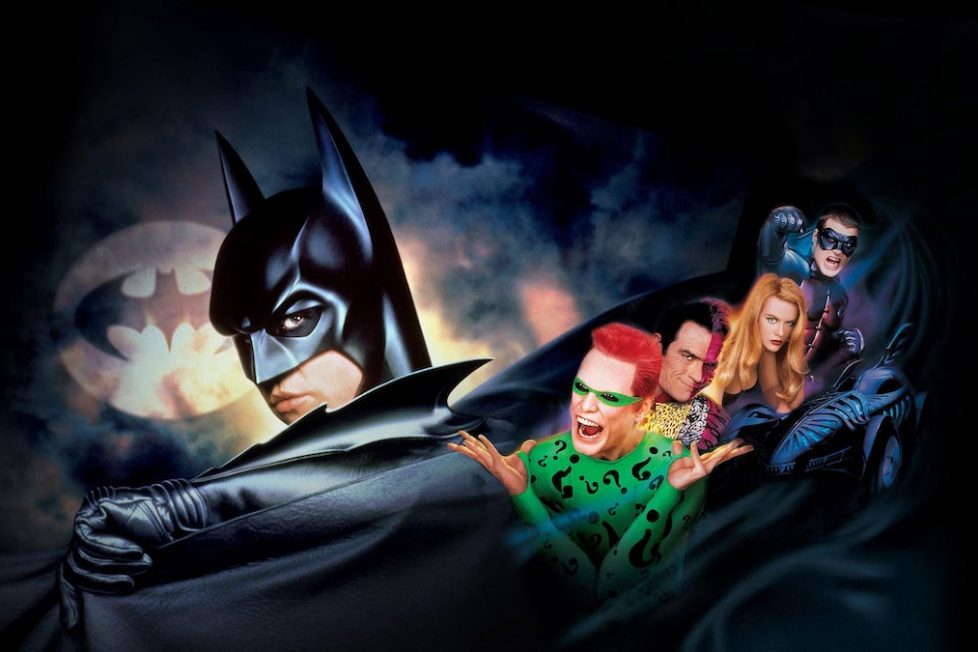
Batman must battle Two-Face and The Riddler with help from an amorous psychologist and a young circus acrobat who becomes his sidekick.


Opening dialogue sets the tone for Batman Forever, as butler Alfred (Michael Gough) asks the question “can I persuade you to take a sandwich with you, sir?” Batman’s (Val Kilmer) deadpan response? “I’ll get drive-thru.” This gag lets audiences know Joel Schumacher’s sequel will be a more lighthearted affair than Tim Burton’s dark and moody instalments. But it also works as a corporate in-joke because McDonald’s weren’t happy with their promotional tie-in with Batman Returns (1992), as parents complained it was inappropriate for a film dealing in skintight latex catsuits to help sell Happy Meals.
McDonald’s anger was one reason Warner Bros. parted ways with Burton as their desire to cash-in with merchandising took priority. The up-and-coming young director had only agreed to return after Batman (1989) if he was given complete artistic control, so when his strange sequel grossed $145M less than its predecessor, the studio opted to hire Joel Schumacher and appeased their fast-food restaurant partners in the first scene.
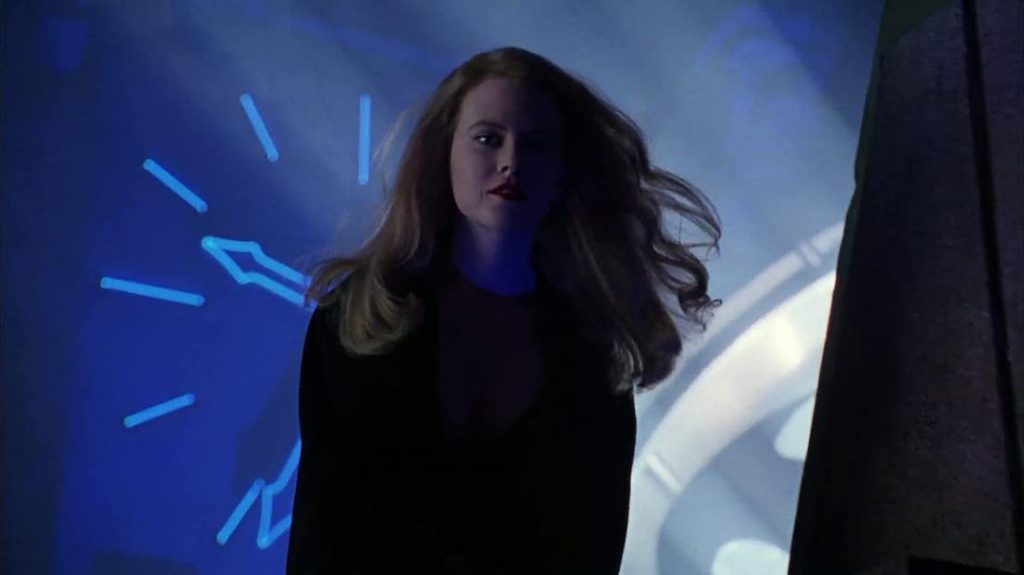
Schumacher was a prominent director in the 1980s with “brat pack” hits like St. Elmo’s Fire (1985) and The Lost Boys (1987), who segued into more serious fare in the 1990s with Flatliners (1990), Falling Down (1993), and The Client (1994). There wasn’t much in his filmography to suggest he would be perfect for a lavish superhero blockbuster, but Schumacher’s initial ideas about adapting Frank Miller’s Batman: Year One graphic novel interested Michael Keaton enough to consider sticking around as Bruce Wayne.
Unfortunately, Warner Bros. wanted a sequel, not a prequel, so Schumacher brought in his screenwriter on The Client, Akiva Goldsman, to punch up a script from writing couple Lee and Janet Batchler that involved supervillain Edward Nygma/The Riddler. Keaton didn’t like the direction the project was moving, so declined a huge $15M payday ($5M more than Returns) to wear the cowl again. Warner Bros. was forced to consider Ethan Hawke, Ralph Fiennes, Johnny Depp, and William Baldwin as their new leading man before Val Kilmer was offered the part because Schumacher enjoyed his performance in Tombstone (1993).
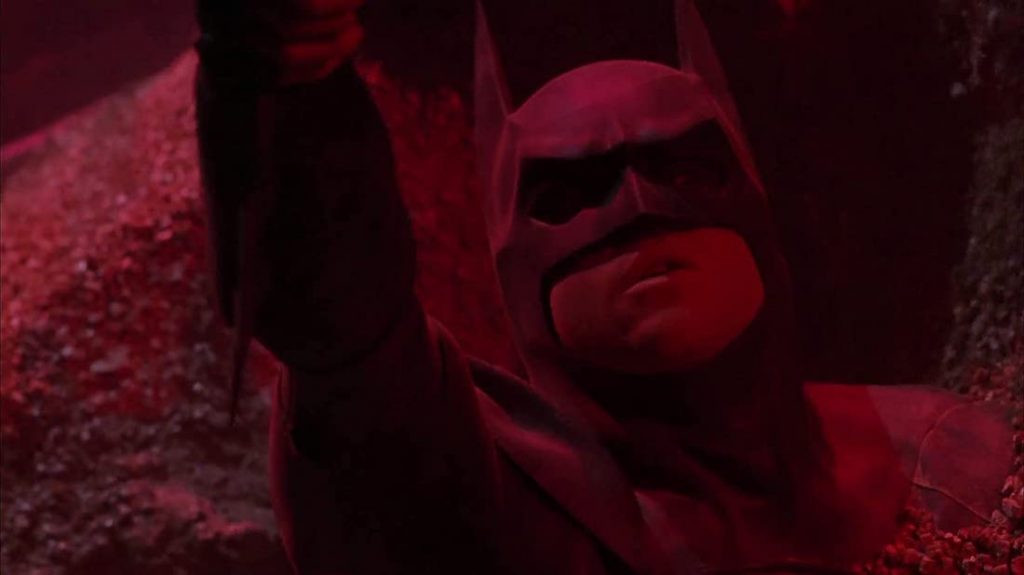
Rene Russo was set to play the new role of psychologist Dr Chase Meridian when the project was taking shape but was ditched her for Nicole Kidman—allegedly for ageist reasons. (28-year-old Kidman was younger than 41-year-old Russo and her 36-year-old love-interest Kilmer). This being a canonical sequel to Burton’s films (hence the return of Michael Gough as Alfred and Pat Hingle as Commissioner Gordon), fans assumed Billy Dee Williams would return to play Harvey Dent/Two-Face because he played the part briefly in Batman. But Burton’s clever foreshadowing suffered a blow when Schumacher opted for Tommy Lee Jones, whom he’d just worked with on The Client.
Robin Williams was a big name that had floated around to play The Riddler for years, but the stratospheric rise of Jim Carrey after his triple-whammy of Ace Ventura: Pet Detective (1994), The Mask (1994), and Dumb & Dumber (1994), convinced Warner Bros. to hire the hottest comedian in Hollywood instead. The idea of including Dick Grayson/Robin almost happened in Batman Returns (Marlon Wayans signed on to portray Batman’s sidekick but walked away with $100,000 when the idea was nixed late in the process), but once Forever started serious development the studio opted for Chris O’Donnell (The Three Musketeers). I guess nobody was ready for a black Robin in the mid-’90s!
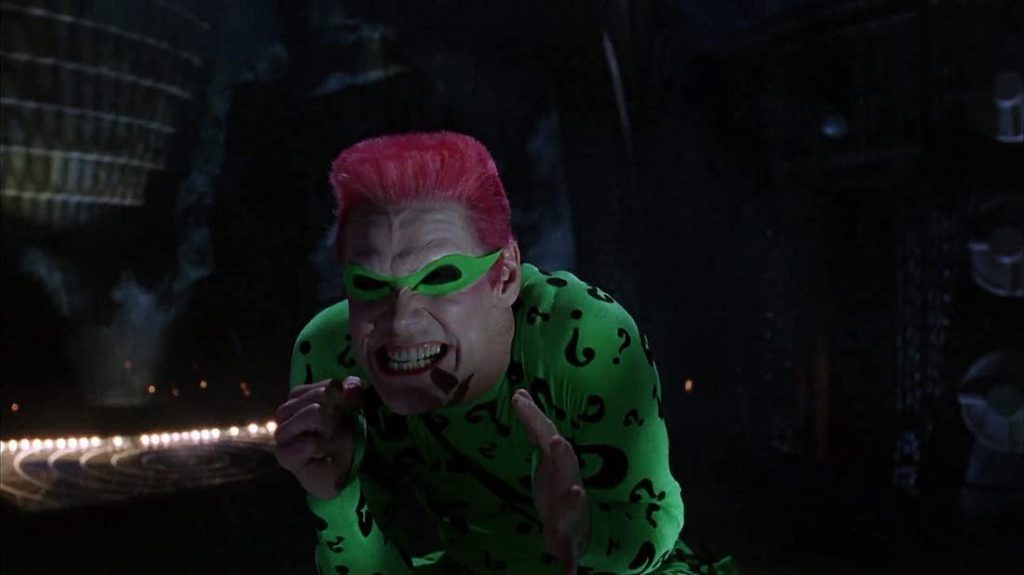
There’s a massive tonal shift away from Burton’s weird sensibilities with the more flamboyant Schumacher in charge. The earlier mix of film noir and Gothic craziness was almost entirely ditched, with a brighter and lighter feel brought to Gotham City and its inhabitants. Barbara Ling was hired as production designer and created a metropolis inspired by the Batman comic-books of the 1940s and ’50s, resembling a hybrid of New York City and Tokyo, filled with giant statues and neon embellishments. If Burton’s vision was dark and industrial, Schumacher wasn’t afraid to let some light in and have fun with vibrant colours and baroque touches.
By all accounts, the set of Batman Forever was a difficult place to be at times. Val Kilmer was allegedly rude to some of the crew, once refusing to speak to Schumacher for two-weeks when the director mentioned his unprofessional behaviour. But the most infamous clash occurred between Tommy Lee Jones and Jim Carrey, as the two actors were like chalk and cheese. Schumacher has since suggested an introverted veteran like Jones felt “threatened” by an extroverted newcomer like Carrey. In recent years Carrey has told a cringe-making anecdote about how he tried to get past their differences after spotting Jones seated in a restaurant and strolled over to clear the air, only for Jones to refuse his olive branch by explaining “I hate you. I really don’t like you… I cannot sanction your buffoonery.”
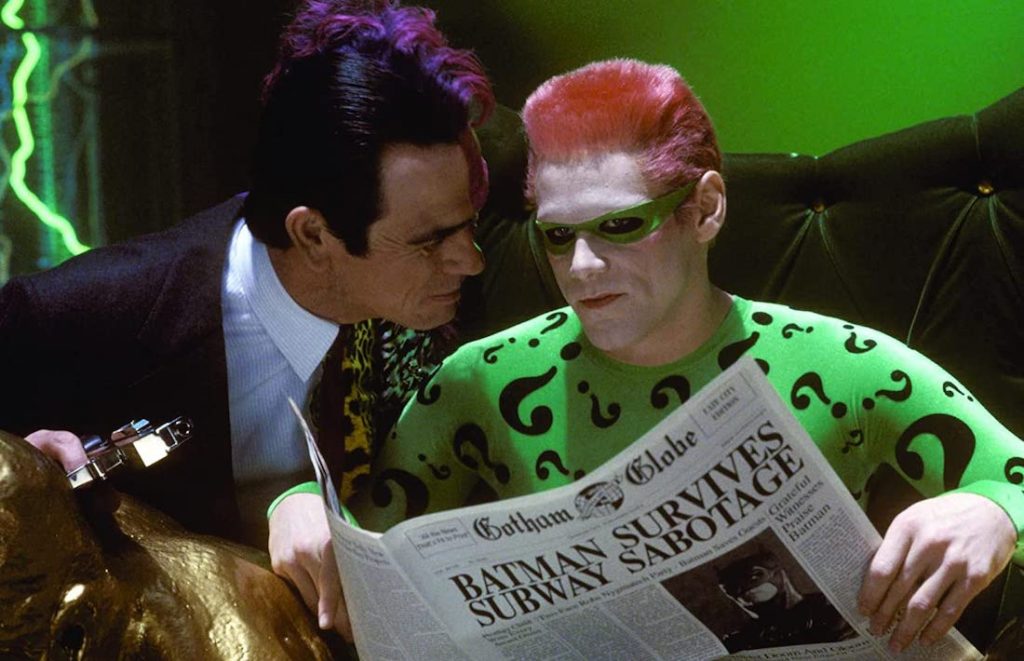
One has to feel sorry for Tommy Lee Jones, in some ways, as one underlying problem with Batman Forever is how the characters of Two-Face and Riddler don’t compliment each other — as written here. Harvey Dent has a psychological split that would be fascinating to explore deeper (as it echoes aspects of Bruce Wayne’s own duality, which 2008’s The Dark Knight leaned into), but there’s no space for that complexity in a purer popcorn fantasy like Batman Forever.
Consequently, Two-Face is reduced to being a cackling madman wearing two halves of different suits and tossing a coin to make decisions. And when Carrey enters in his emerald Riddler costume twirling a cane, Jones must have known he’d be blown off the screen if he didn’t at least try to keep up with this new kid on the block. So a lack of better material and having to share scenes with Carrey probably pushed Jones into a style of “overacting” he’s not comfortable with, or felt was appropriate, knowing he’d otherwise melt into the background if he played things quieter. Jones only signed up to Batman Forever because his teenage son urged him to, but one wonders if he thought the part would do for him what playing The Joker did for Jack Nicholson.
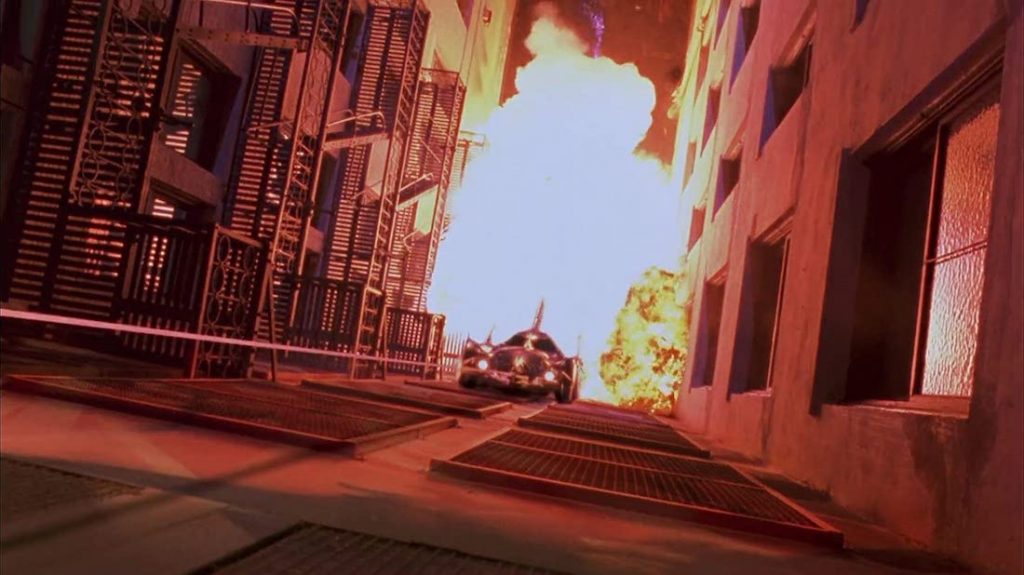
Val Kilmer has almost become overlooked as a wearer of the iconic cowl and cape. Most people prefer Michael Keaton (of course), but even George Clooney seems to get mentioned more often than Kilmer, if only because he was in the inarguably worse Batman & Robin (1997) and it’s a fascinating wrinkle in his still-relevant career.
Batman Forever may be resolutely average but Kilmer’s approach to the role isn’t bad. I find it interesting his Bruce Wayne’s a little aloof even at Wayne Enterprises, and the story does a better job servicing his character compared to the short-shrift Keaton was given on Returns — as Burton was more interested in the freaky villains. Schumacher’s a more sexualised filmmaker too, so it’s no wonder that the romantic aspect of the story works better here. The relationship issues between Bruce and psychologist Chase is essentially a better take on the Vicki Vale relationship from Batman — only with Chase in love with both of Bruce’s identities. This means he finds himself in a love triangle of two, amusingly. The Batman alter-ego may have rescued young Master Wayne from a traumatic childhood, but it’s doing nothing to simplify his sex life as an adult! It’s a fun wrinkle in the story, but one that doesn’t get explored deeply enough because there’s too much jostling for attention.
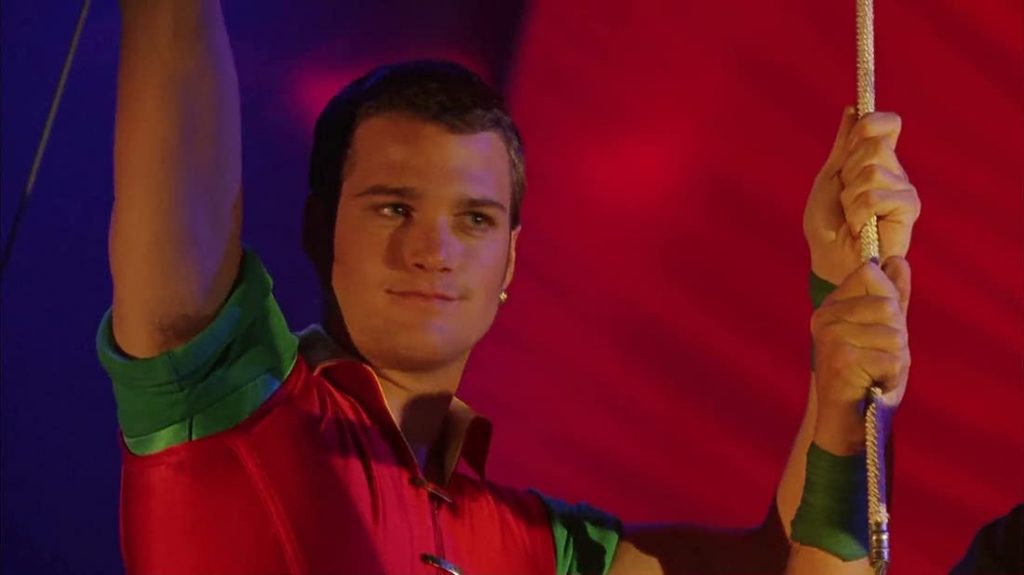
In the years before, and since, Batman’s sidekick Robin has been absent in the live-action movies. Bruce Wayne was reinvented in the 1980s as a solo vigilante by Frank Miller, so most filmed incarnations have stuck with that approach because it makes more sense for the character. Even the phrase ‘Batman and Robin’ conjured images of the camp 1960s series in the ’80s, which Burton was trying to erase from the public consciousness…. and now it’s the title of Schumacher’s 1997 travesty!
But in 1995, the stars aligned to let Batman’s trusty sidekick get a chance to shine on camera, and it wasn’t a calamitous effort. One of Batman Forever’s best moments introduces Dick Grayson as part of the ‘Flying Grayson’s’ trapeze act, during a Big Top performance hijacked by Two-Face where Bruce Wayne’s unable to help because he’s a spectator in the crowd. The Grayson’s save the circus by getting rid of a ticking bomb, but only Dick survives their team effort. The young man’s circumstances as someone orphaned by a supervillain naturally speaks to Bruce, who tried to reach out to him without being able to explain why, but hoping to quell the anger boiling inside of him. And after Dick’s eventually persuaded to hangout at Wayne Manor fixing classic motorcycles, he grows suspicious of Alfred’s activities and eventually discovers the Bat Cave.
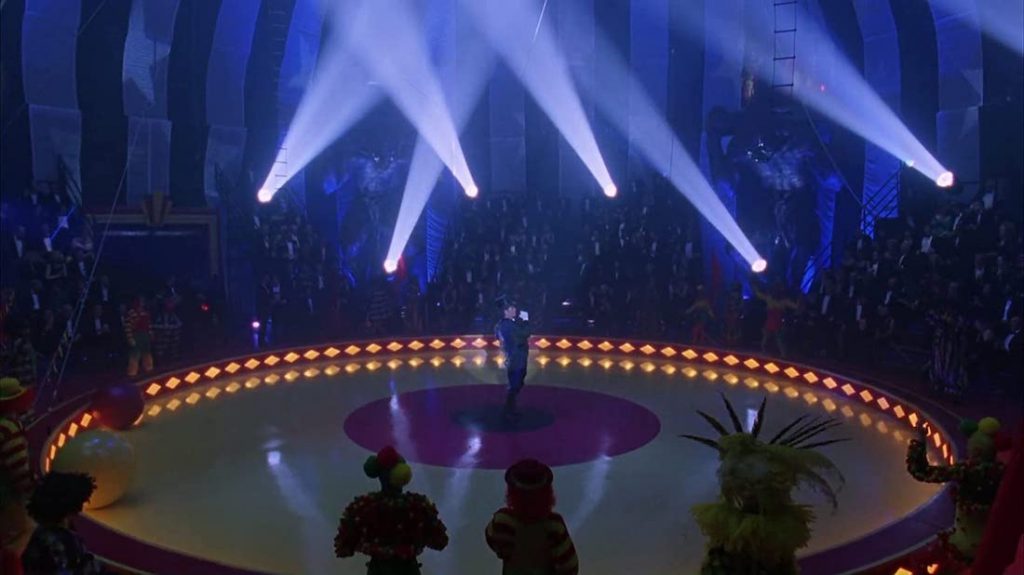
In watching Batman Forever for the first time in close to 20 years, I was surprised by how much I enjoyed the quieter scenes between Bruce and Dick. They’re two damaged men who come to realise they could help each other out by becoming a crime-fighting duo. It’s obvious enormously cool for Dick to realise this stiff billionaire’s actually the Dark Knight, but even Bruce comes to realise he could do with sharing the burden of his vigilantism. (And yes, there’s a whiff of this being a surrogate father-son arrangement, which I found oddly endearing.) And why should villains always be the ones who have fun teaming up? That’s starting to becoming a habit, so time to even the score!
Chris O’Donnell is likeable in the role and nicely contrasts Kilmer’s quiet moodiness with a more upbeat spirit, without overplaying things like Carrey and Jones are doing elsewhere. Batman Forever should really have been titled Batman & Robin, as that aspect of the story has aged surprisingly well. Back in ’95, it was Carrey’s antics that stole the show because he was the golden boy audiences wanted to see more of, but his madcap shtick’s no longer as fresh.
Ultimately, Schumacher succeeds in delivering a more mainstream family-friendly blockbuster with slicker action sequences, a terrific score by Elliot Goldenthal (who equals Danny Elfman’s work with his own memorable Bat-theme), and dollops of humour about its own ridiculousness. But it’s nowhere near as interesting as Burton’s idiosyncrasies and fudges both villains by making them shallow and unthreatening goofballs. Batman Forever ends up being a mish-mash of ideas and shiny visuals… but it’s entertaining and certainly no unmitigated disaster. That would come next…
USA | 1995 | 121 MINUTES | 1.85:1 | COLOUR | ENGLISH

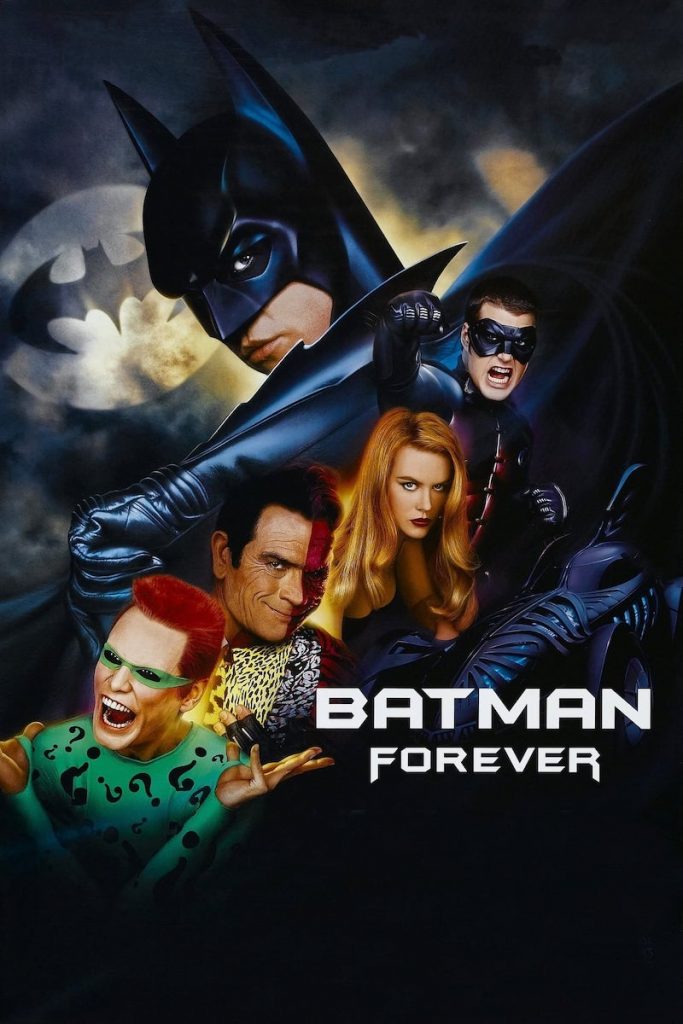
director: Joel Schumacher.
writers: Lee Batchler, Janet Scott Batchler & Akiva Goldsman (based on characters published by ‘DC Comics’ & created by Bob Kane.)
starring: Val Kilmer, Tomy Lee Jones, Jim Carrey, Nicole Kidman, Chris O’Donnell, Michael Gough & Pat Hingle.
